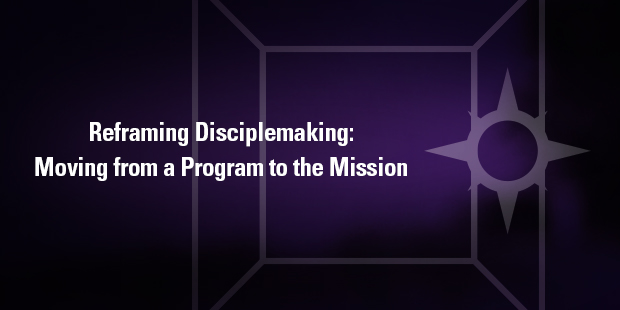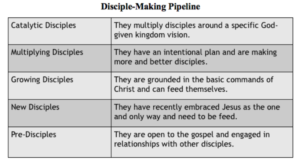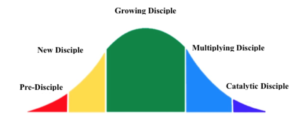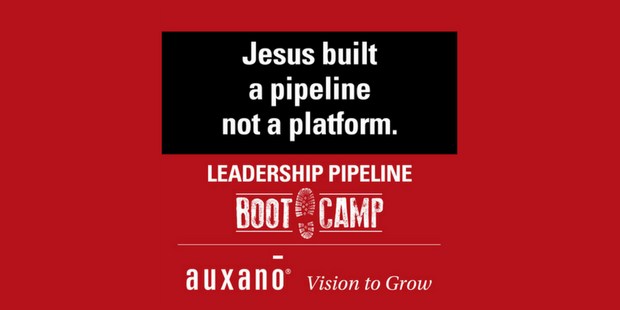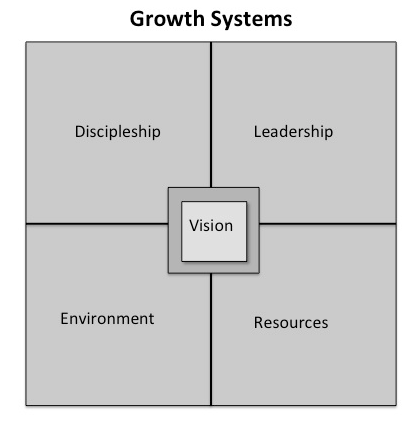Recently I had the opportunity to host a younger friend that I’ve coached through the years, in my home. While we were on an afternoon run he asked me to share with him some of my life’s lessons that had impacted me the most. More specifically the question my friend asked was, “Tell me about what you’ve learned that I need to know”.
As we begin a new year, I’ve found myself reflecting on his question. I thought it might be helpful to share my list with you. These simple practices are now hardwired in me. I guess you could say they are what make me who I am. I’m convinced that they have and continue to change the trajectory of my life for the better.
Starting each day with these practices makes my life and those around me better. They motivate me to face each day as an exciting journey. God is writing a story in each of our lives and he gives us the resolve and resources to influence that story for the better.
Here’s what you need to know!
Aim for 80%
This practice I’ve learned from my experience with fitness. Over the last few years I have hit most of my fitness goals. That hasn’t always been so. There was a time when I was failing when it came to my own physical vitality. I tried numerous diets and workout routines with no avail. That has all changed.
I no longer diet. Instead, I studied nutrition and developed a healthy lifestyle. I’ve eliminated most sugar and gluten related products from my life. I eat food rich in protein, healthy carbs I get from vegetables and fruits, and I include healthy fats. I do this day-in and day-out or at least 80% of the time.
This doesn’t mean there aren’t times in my life that I aim for 100%. As a lifestyle, I know that I’m not going to be 100% all the time. However, as a discipline, in most things I can be 80%, and 80% has the potential for changing the trajectory of my life and putting a win in the win column.
Aiming at 80% can be applied to numerous areas of my life. Hitting 80% of my savings goals is better than failing at 100%, and giving up all together. The same is true in my consulting practices. If I can get a 100% of a team of visionary leaders to agree at 80%, we can keep things moving until we get to 100%.
Perfectionism can lead to failure. It tends to immobilize us and frustrates almost everyone around us. Aiming at 80% allows us to extend a little grace to all. Aiming at 80% may be actually what you need in your life to get unstuck and move forward toward achieving your goals.
Don’t Overthink
Overthinking is simply thinking about something too often for far too long. This may not be your issue, but it certainly is mine. It can be as innocent as planning a trip or making a simple purchase. Other times it can be much more complex and leave us stuck in an unhealthy place.
A good example of my overthinking is my tendency to plan every detail of a trip when I travel with family and friends. At times they love it, but other times it drives them over the edge. They poke at me by suggesting that I don’t even need go, since I’ve already taken the trip – referring to my over planning.
While some overthinking is helpful, not all overthinking is created equal. Overthinking can have a negative effect on our lives and those around us. If you are an over thinker, it is easy to obsess over decisions that need to be made, relationships that need to be healed, and experiences from which you need to move on.
Several years ago I became convinced that I needed to resign from my position as a pastor in a local church and invest my time helping other individuals, organizations, and churches succeed. On a Tuesday morning, in my early morning reflection time, I finally reached a point of clarity that this was indeed what I needed to do. That morning I shared with my wife my new insight and my resolve to make the change. She quickly confirmed it and promised her support. At 2pm that day I resigned.
Why did I resign so quickly? Because I knew I would overthink my decision if I didn’t. I knew I would spend the next days, weeks, months, and literally years thinking about making this change. Instead I resigned that day. I didn’t have all the answers, but I made the decision and this decision, I’m convinced, changed my life for the better. It wasn’t easy. I failed along the way. I had doubts along the way, but, I acted and it made all the difference.
Express Gratitude Often
As I write this we are beginning a new year. The previous year has been a difficult one. As I scan through my Facebook feed I realize I’m not alone. While I refrain from posting my personal life on Facebook, others I know feel the need to share. I do appreciate my friends that do share because it helps give me perspective. Life is difficult. Jesus tells us that in this world we will have trouble. He wasn’t kidding! Yet in spite of whatever you and I have gone through, we have much for which to be grateful.
Practicing gratefulness by expressing those things we are grateful for unlocks our heart and creates a more generous and thankful me. Most mornings, during my time of reflection, I send out a simple text to my spouse and grown children that simply states things for which I’m grateful. I do this for myself and I do it for them.
During some really tough times I need perspective. I need to see the good in the midst of the bad. I need to be reminded that “all things do work together for the good to those who love God and are called according to His purpose” (Roman 8:28). I also want my wife and children to share that perspective.
I’ve learned this practice from many sources, but specifically my son. While he was in the army he spent 15 months deployed in eastern Afghanistan. During that time he spent most of his time on patrol. Most of those months he slept out in the open and ate one meal a day. On several occasions he came close to losing his life. When he returned home I noticed that he constantly expressed gratitude for just about everything. He was so grateful. What I learned was that gratefulness is not about our circumstances, but a condition of our soul. Our greatest expressions of gratitude often flow out of our most painful experiences. Our adversity gives birth to gratitude.
Pray With Your Spouse Daily
This is one of my favorite practices. It is so simple, but I’m convinced that it has shaped my marriage and changed my relationship with my wife for the better. Each morning Tami and I face each other, hold hands, and pray a brief prayer together. Usually our prayers are less than a minute long and are fairly predictable. Yet at the same time this is the one practice that I believe has changed our life together the most.
I think it has had this profound impact for several reasons. For one, it’s hard to pray with someone when you are mad or have unresolved issues. This is true even for a brief prayer. In 37 years of marriage I can think of only two or three times that we didn’t pray because of conflict. Whenever we have had conflict where we didn’t pray, that conflict was resolved by noon. Another benefit of our daily prayer time is whenever something was going on in our lives that required a more focused time of prayer we already had a space in our lives for it.
Always Lead With Truth
This one is a little harder for me. I’m a truth teller. I value telling the truth. At the same time, I struggle to always lead with truth. For me, I have to work on my truth telling; I don’t want to hurt your feelings. Sometimes I want to withhold information or my opinion. At the same time, I think if you asked my friends if I am a truth teller, they would tell you that is one of the things I do well. You don’t have to be wired or like truth telling to be truthful. Some of us simply have to work at it.
On the other hand, my wife is a natural truth teller and because of it I respect her opinion or input more than anyone else. When I’m struggling with something, I will sometimes ask her to speak truth into a certain situation or me. I trust and need her perspective. I have affectionately nicknamed her ‘the judge’. It’s not that she judges people. She is a very gracious person toward others, but she sees black and white and is gifted in calling it out.
Truth telling is important for a number of reasons. Some of these reasons are obvious, while others not. Truth brings to light whatever is in the dark. Even though this truth often hurts, it is also this painful truth that heals. Truth is essential to healthy relationships and a healthy life.
Always leading with truth involves being truthful at every level. If you have an issue with something or someone, be truthful about it in the right way. If you are caught in mistruth or half-truths of other’s relationships, bring everyone together in the same room. Invite others to speak truth into your life. We all have blind spots in our lives where we could benefit from skilled truth tellers.
Lead With The Golden Rule
There are two ways to live our lives. We can live in a way where it’s all about us or we can live it in such a way that it’s all about others. The Golden Rule is about treating others the way we want to be treated. What an incredible principle. We all know how we want to be treated; therefore, treating others good is innate. I didn’t say it was easy, but when it comes to how we treat others, we are without excuse.
I find myself living my life in both ways. There are days that I move through life so fast, anything and everything in front of me is in my way. Its those days that I just steamroll over everyone and leave a wake of brokenness behind me. This is an ugly and narcissistic way of living life.
On the other hand, there are days that I am more aware and intentional about living out the Golden Rule. It’s a beautiful thing when I find myself deferring to those around me. Living out the Golden Rule can be as simple as letting incoming traffic merge into my lane ahead of me. This isn’t a typical response in Atlanta where I live.
For me living out the Golden Rule mostly means being aware of people around me and treating them with honor and respect. I treat them with honor and respect because that’s the way I like to be treated. Sometimes living the Golden Rule can be challenging and difficult. We live in a messy world. We live in a world where there is hurt and pain. When I feel that I am violated or mistreated, I want to lash out. When I am the one who violates or mistreats, I want to experience grace. Living the Golden Rule is about extending the grace that I so much want to experience.
Living the Golden Rule is life giving. I never feel more alive than when I am intentionally living the Golden Rule. Not only that, but I see people all around me coming alive.
Work On You Daily
It’s been said many times, you can’t lead others until you lead yourself. Several years ago I made a transition from a leadership role in large organization to a local church. The first thing I did in my new role was sought out advice from those who were experiencing success. It won’t surprise you that the advice I received was “grow the leader…grow the church.” For the next six years I spent my time doing everything I possibly could to see that our senior leader was growing. At the end of that season our church grew from 500 to over 2000 in weekend attendance.
What we learned during that incredible run was that we had to work on us if we were to lead a growing organization of any kind. It wasn’t enough to work in it all the time. It was just as important or more so to work on it. Our first responsibility as a leader is to work on us. Whether you are a mother who is leading three little ones at home, a student leading a drama team, a chief executive leading a large company, or a pastor leading a church, it all begins with leading ourselves.
For me, this means working on nine areas within three different domains around which I’ve built my Life Plan. The following diagram represents these three domains and nine areas. I break them down like this:
- Spiritual Domain – I focus my life purpose.
- Personal Domain – I focus on my emotional, physical, intellectual, and financial life.
- Relational Domain – I focus on my family, friends, vocation, and adventures.
I set specific goals in all nine areas beginning with my Spiritual Domain and moving out. I tend to focus on the mastery of one area at a time. I focus on the area that needs the most work first.
I have also come to realize that winning in all these areas is a marathon, not a sprint. Mastering all nine areas is a life long journey. When I come to the end of my life, I think it would be appropriate to simply say, “At least he was working on it.”
Working on it involves working on me every single day of my life. This is my most important responsibility. I really don’t have anything to offer my family, friends, or those I coach and consult, until I work on me.
> Read more from David.

Tags: David Putman, Personal Development, Personal Improvement
|
What is MyVisionRoom? > | Back to Leadership >
